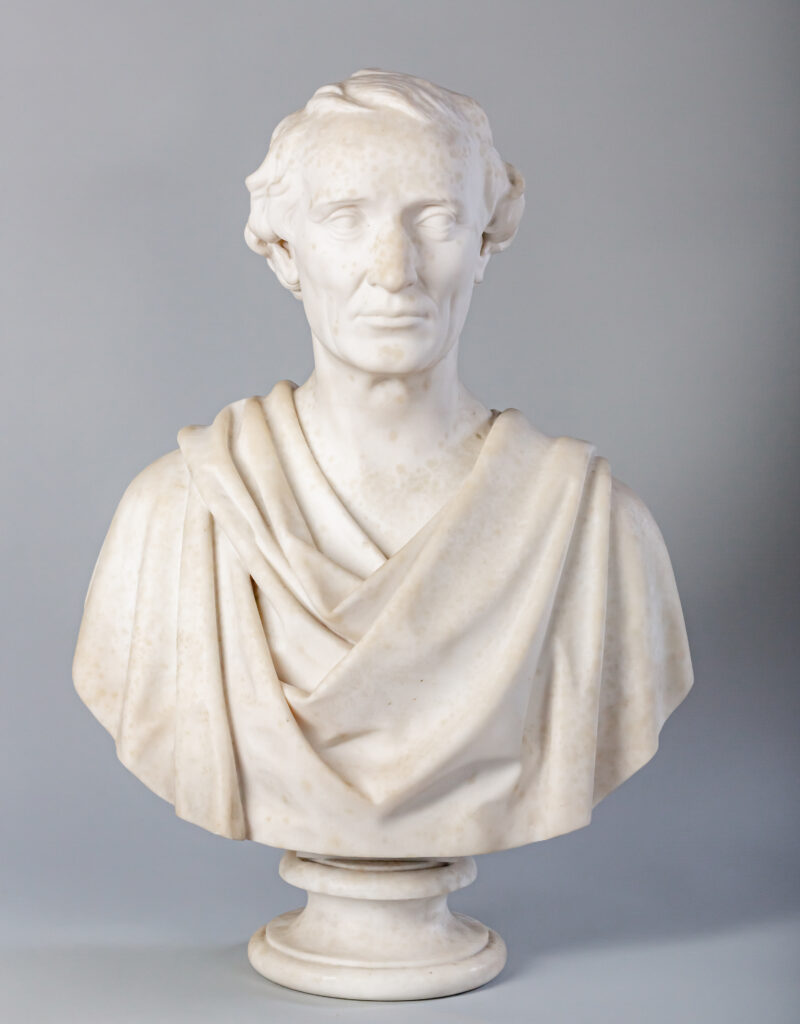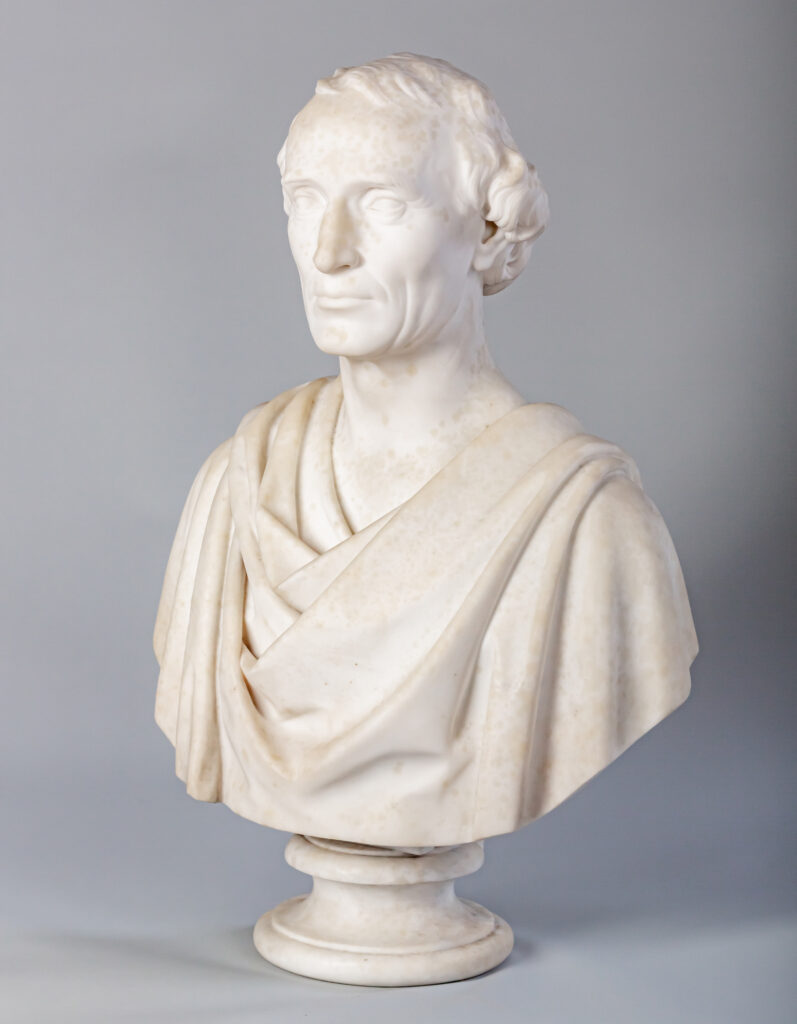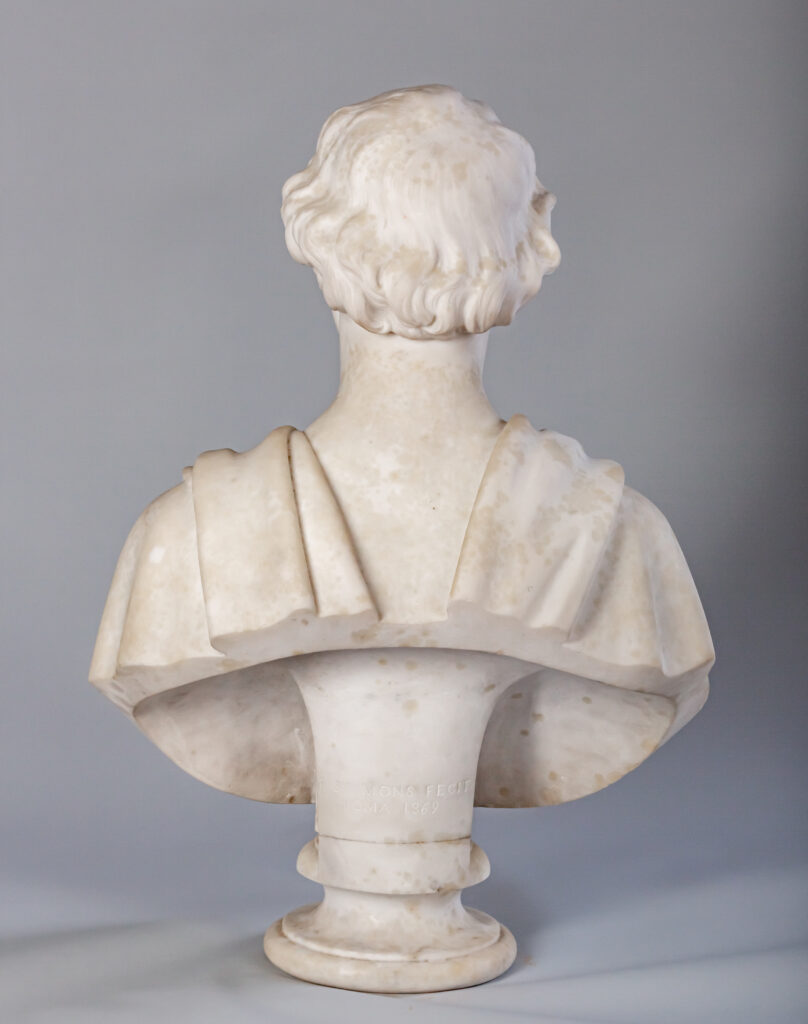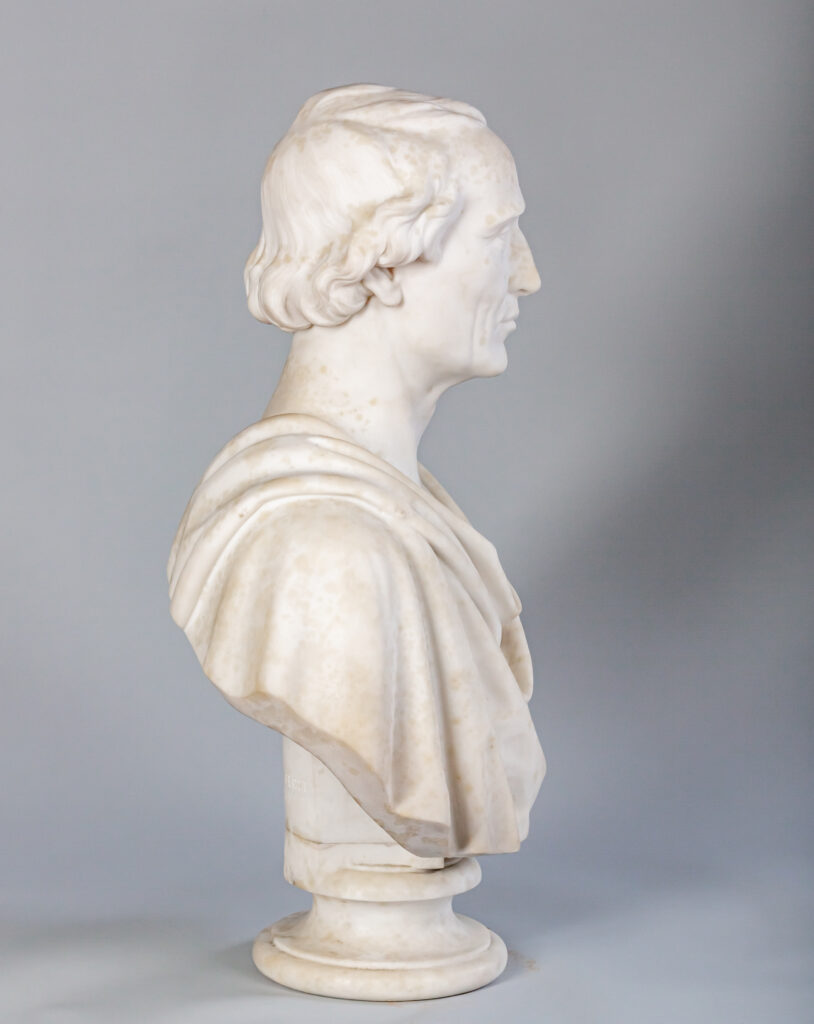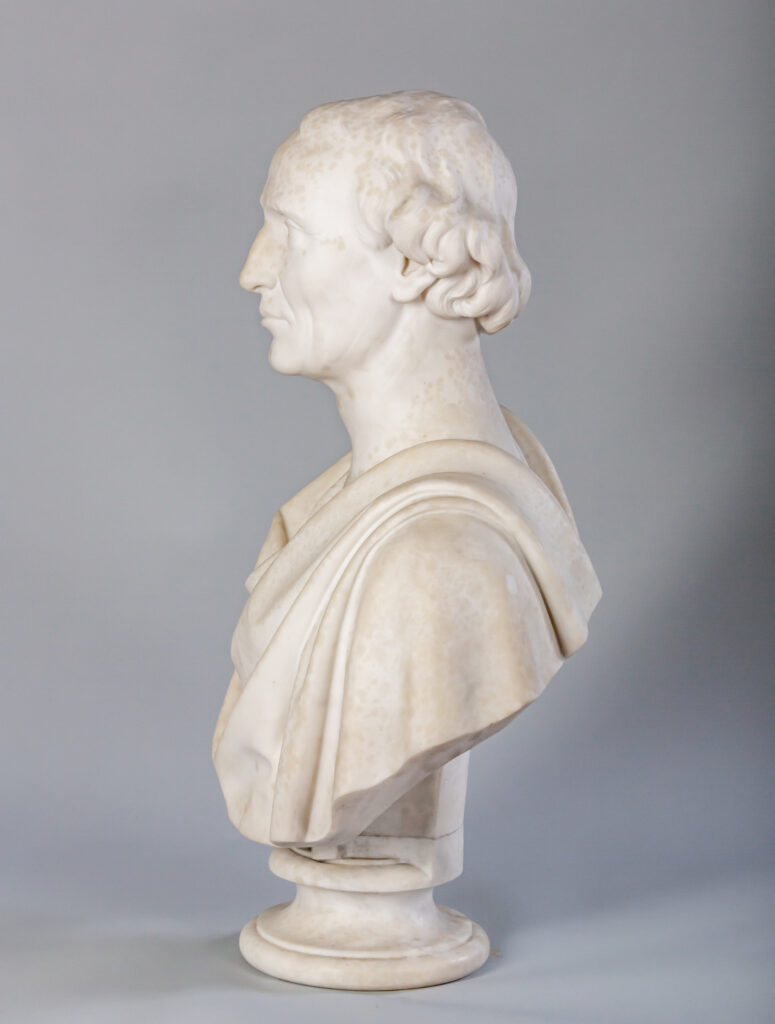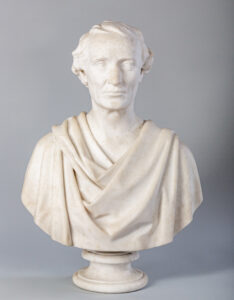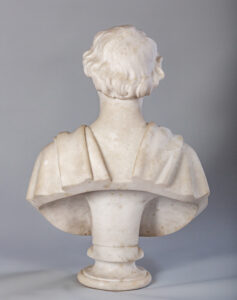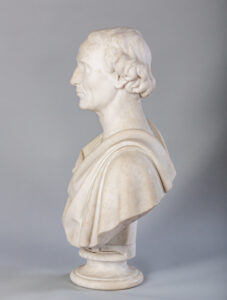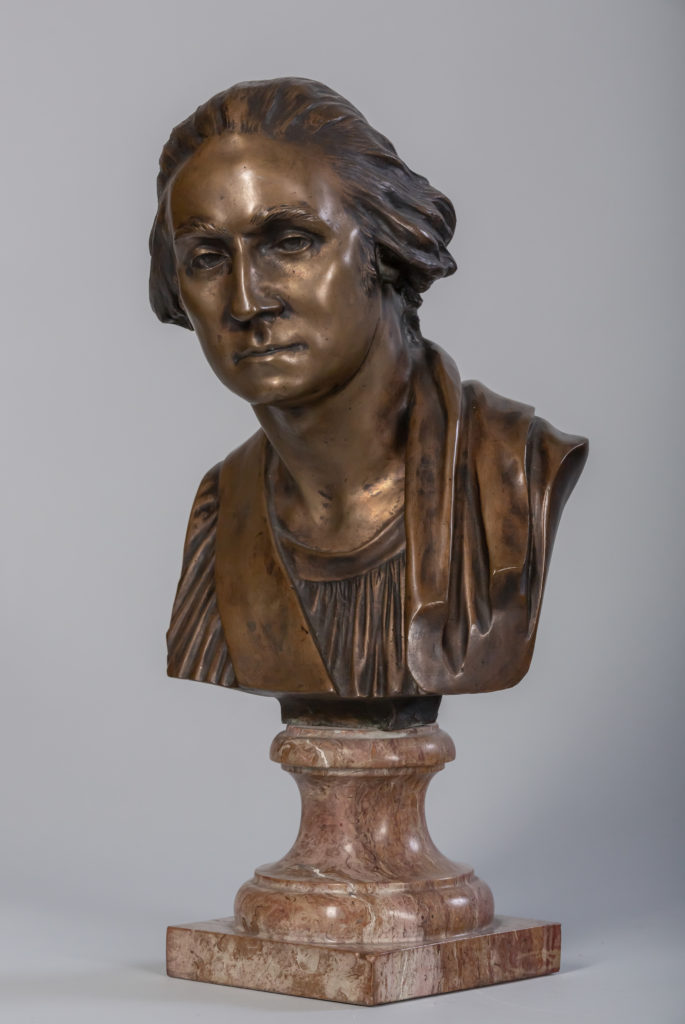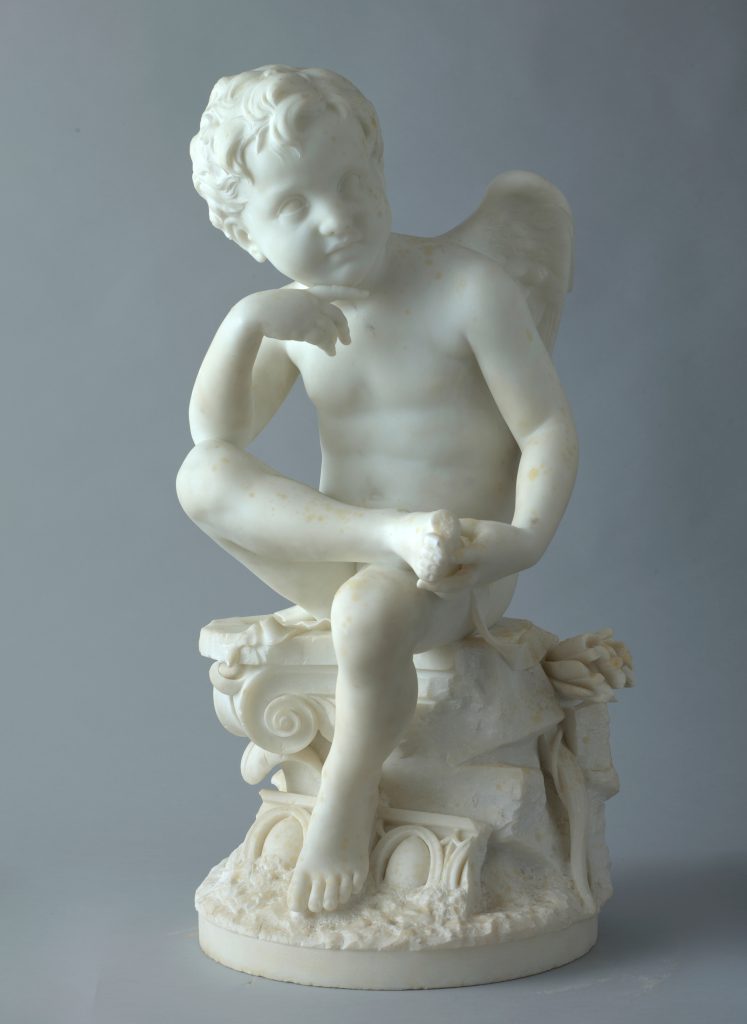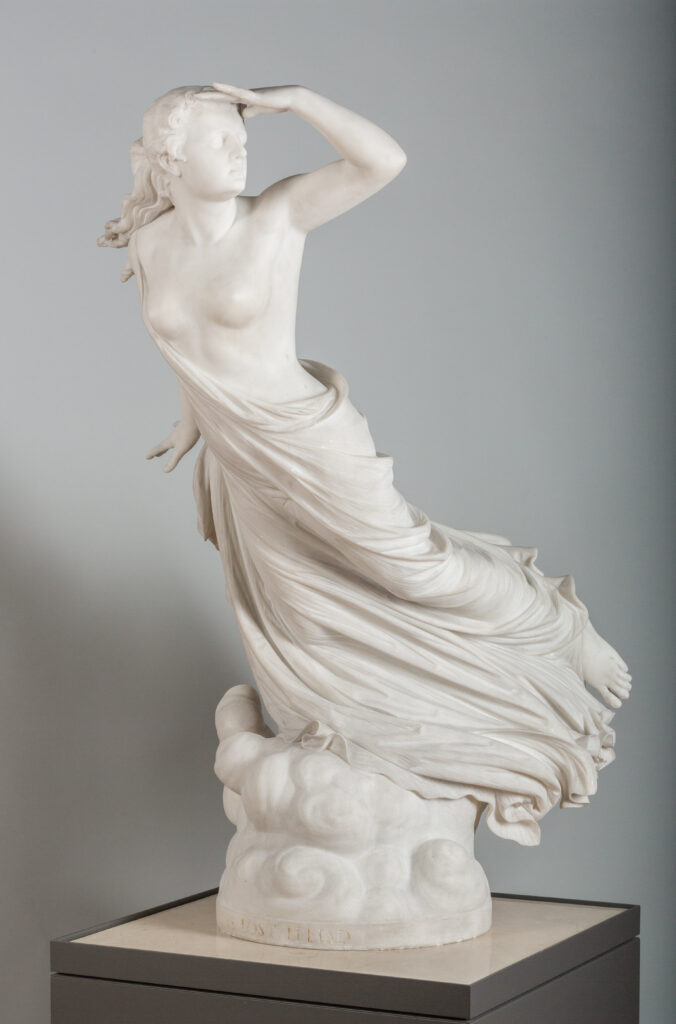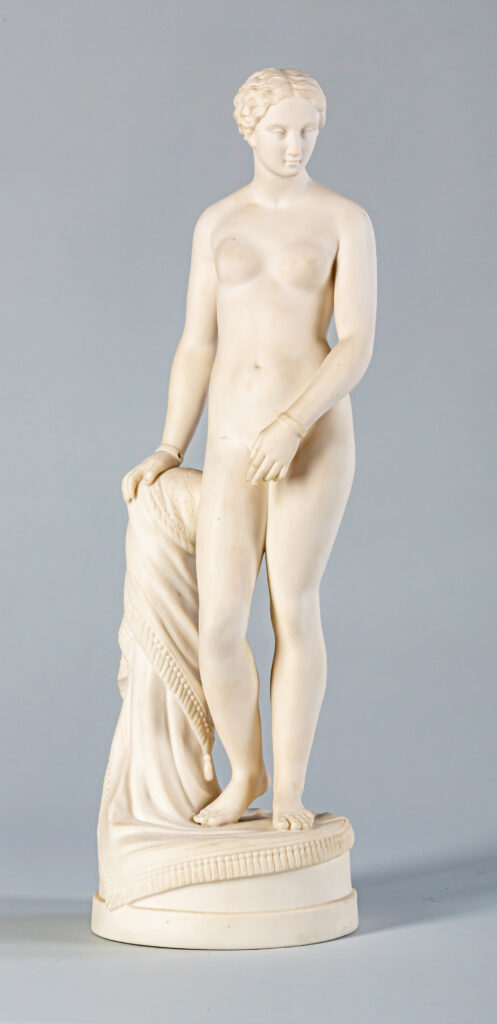Portrait of Nathaniel Whittemore Farwell (1818–1868)
Museum Purchase, Sylvia E. Ross Fund
1966.29Franklin Simmons was a native of Maine who began his career under the tutelage of fellow Maine sculptor John Adams Jackson (1825–1879). In 1868, Simmons moved to Rome and established a studio. This posthumous portrait bust of Nathaniel Whittemore Farwell (1818–1868) was completed shortly after Simmons’s relocation to Rome and may have been commission while the artist was still based in Maine and of growing local acclaim. It is a testament to the classical taste in American culture during the period, as well as the impact of Rome on the sculptor. Farwell, a prominent businessman and mayor of Lewiston, is depicted in the togaed garb and refined style of a Roman senator.
Already having established himself as a portrait sculptor in America, Simmons continued taking commissions while in Rome like fellow Americans working in the city, such as Thomas Crawford and Randolph Rogers. Over the course of his career, Simmons carved some seventy-two portrait busts, the genre with which he was perhaps most comfortable, as well as some three dozen statues and public monuments. At the same time, Simmons’s exposure to classical idioms and ancient models found expression both in his commissioned work, like the bust of Farwell, and in his ideal sculptures, only a few of which found buyers (the majority were given by bequest to the Portland Museum of Art). Relatively few individual patrons of Simmons’s could afford to have their portraits executed in marble; most were completed in plaster. Farwell’s success in business allowed him to purchase not one but two marble busts, the second of which resides today in the Farnsworth Art Museum (Rockland, Maine).
